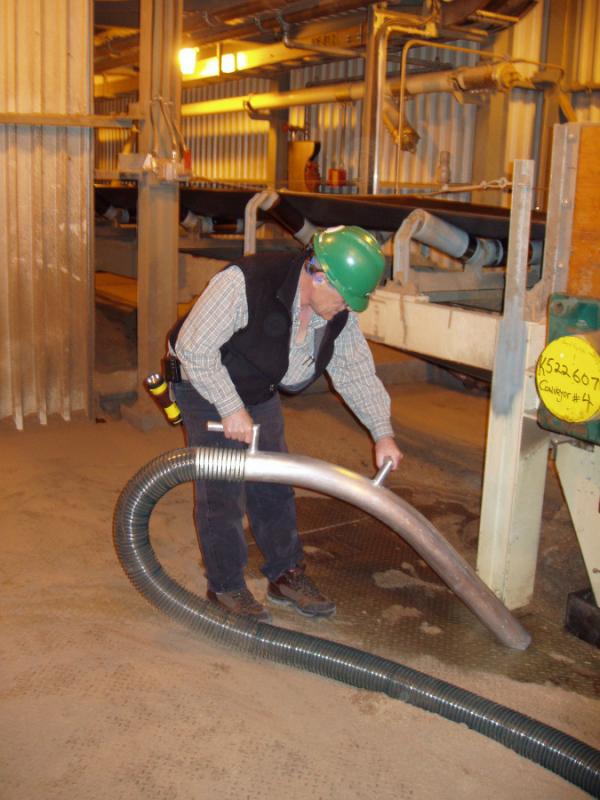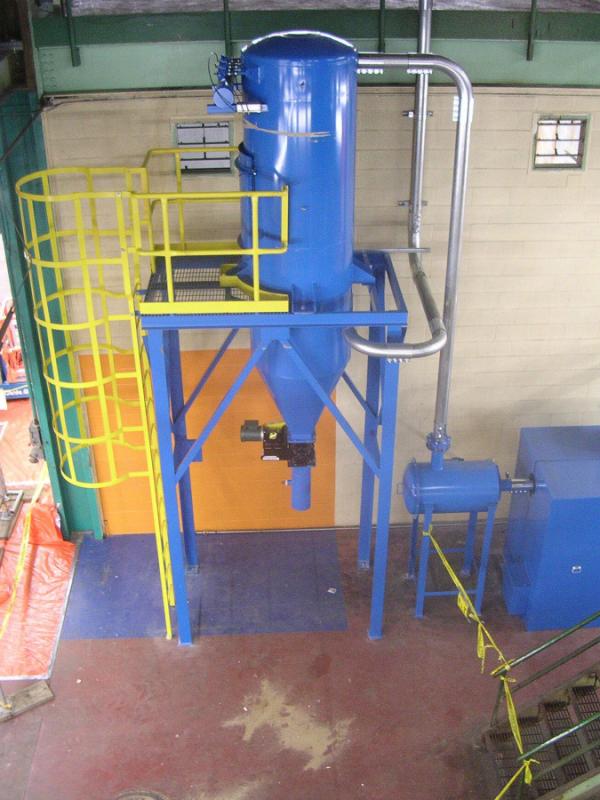Keeping warehouse health and safety top of the agenda.
Dust prevention in warehouses is essential for the health and safety of your workers, machinery and for business. Mark Nicholson writing for Eureka Magazine, highlights the dangers and the solutions to managing dust in a warehouse, with advice from a leader in the dust-fighting field.
“Warehouses are typically quite clean compared to factories, where cleaners sometimes face thick layers or deep spills of material,” says Anh-Tai Vuong, President of industrial vacuum specialist DuroVac®. “Nevertheless, dust gathers on almost every surface – and none of it should be viewed as harmless.”
Where does dust come from and why is it a problem?
Dust in a warehouse is composed of many elements and comes from a variety of sources including: sand, grit and dirt from the outdoors; the wearing away of tyre and break pad materials; the rubbing and cracking of floors releasing particles such as silica, (a known health hazard) and cutting, grinding and sanding tasks in warehouse construction and maintenance. However, most dust in a warehouse probably comes from the cardboard in boxes and the wood in crates and pallets.
It then becomes airborne due to the movement of warehouse equipment, people or processes such as using compressed air to clear it from equipment – a practice DuroVac says is particularly frowned upon in applications where combustible dusts exist.
The health of your employees should be your main dust-related concern, but there are also other good reasons to reduce dust in your warehouse:
- Dirty and contaminated products or packaging give a bad impression and may be rejected.
- Dust may create slipping hazards for vehicles and personnel.
- Dust can damage warehouse machinery, including forklifts, by entering and abrading moving parts.
The cost of dust in human lives and health
Anh-Tai Vuong summarises the most worrying effects of dust on humans as being from the finer particles that can evade our body’s defences as they may become lodged in the lungs or absorbed into the bloodstream. He states that long-term exposure to dust often contributes to respiratory disorders, such as bronchitis, emphysema and other forms of chronic obstructive pulmonary disease (COPD), as well as cancers. Workers with COPD, a life-changing and debilitating disease, find breathing difficult and will be less productive due to time off when symptoms are aggravated by colds or flu. Additionally, less serious effects of dust in a warehouse such as dermatitis, allergic reactions and irritation of the eyes, nose and throat, can also cost work time.
Managing dust in the warehouse
Vacuum systems
For the largest buildings, DuroVac recommends the installation of a heavy-duty central vacuum system where the pipework and flexible hoses radiate from a single suction unit to reach all areas of the warehouse and allow simultaneous use by multiple staff. The most powerful systems can remove thousands of kilos of dust per hour.
For smaller warehouse spaces they recommend portable industrial vacuum systems which still deliver high suction power to remove large dust accumulations and pick up heavier grains. There are a range of choices in the market for these portable systems, but they need to be cost-effective for the building’s dimensions and also to bear in mind that a higher-powered machine will save on cleaning time and labour costs.
Air cleaning systems
Extraction and filtration systems can be used for dust prevention in the warehouse to draw air into high-positioned units which trap airborne particles and then recirculate the cleaned air. Anh-Tai Vuong suggests that these systems should be used alongside vacuum systems for maximum effect.
Filtration technologies for air cleaners can be selected according to the types of dust or other pollutants present. An alternative air cleaning approach is to use a ventilation system in which extractor fans pull air into ducts. A variation on this, for processes which generate dust or fumes, is local exhaust ventilation (LEV), where extraction hoods draw pollution from its point of origin.
Other systems for manging dust in the warehouse include Fogging systems which emit a fine mist which combines with dust particles and makes them heavy enough to fall to the floor, without soaking the warehouse and its goods. (Although highly effective, especially for warehouses with high concentrations of airborne dust, DuroVac believes it is not ideal for general use due to its high consumption of energy and water making it environmentally unfriendly.)
Using partition walls or curtains as part of an overall dust control strategy can also help stop dust spread from one area to another and is a simple and flexible method to use.
Anh-Tai Vuong adds that where dangerous concentrations of dust are a risk it’s worth considering the installation of air monitoring sensors to track if warehouse health & safety levels are exceeded. Additionally, in some workplaces, where dust is inevitable even after all reasonable measures have been taken to eliminate it, workers should be provided with the necessary personal protective equipment (PPE) and given clear information on the dangers and safety protocols for all possible dust.
This is an abridged article, taken from Eureka Magazine. To read the full article please visit https://eurekapub.eu/health-safety/2020/01/17/danger-in-the-air.


